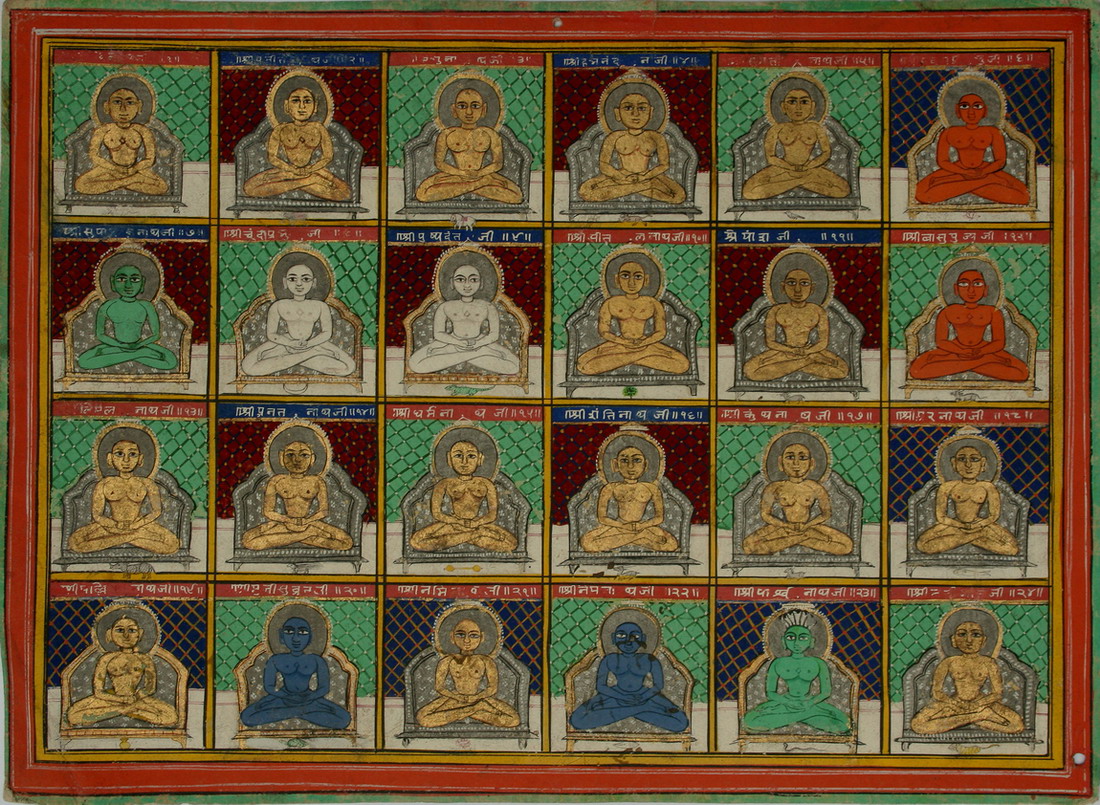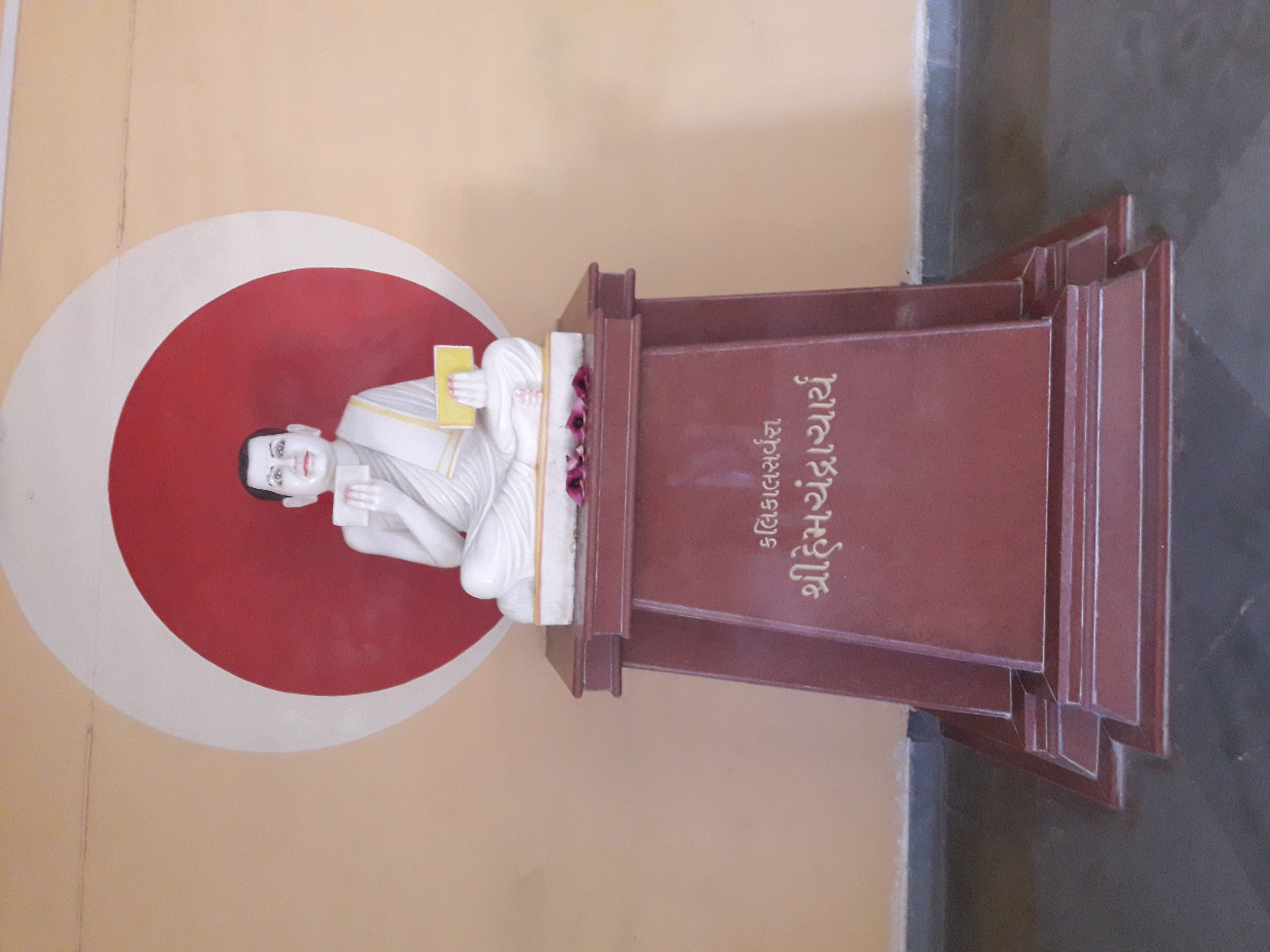|
Acharya Samantabhadra
Samantabhadra was a Jain ─üc─ürya (head of the monastic order) who lived about the later part of the second century CE. He was a proponent of the Jaina doctrine of Anek─üntav─üda. The '' Ratnakaranda ┼ør─üvak─üc─üra'' is the most popular work of Samantabhadra. Samantabhadra lived after Umaswami but before Pujyapada. Life Samantabhadra is said to have lived from 150 CE to 250 CE. He was from southern India during the time of Cholas. He was a poet, logician, eulogist and an accomplished linguist. He is credited with spreading Jainism in southern India. Samantabhadra, in his early stage of asceticism, was attacked with a disease known as ''bhasmaka'' (the condition of insatiable hunger). As, digambara monks don't eat more than once in a day, he endured great pain. Ultimately, he sought the permission of his preceptor to undertake the vow of Sallekhana. The preceptor denied the permission and asked him to leave monasticism and get the disease cured. After getting cured he aga ... [...More Info...] [...Related Items...] OR: [Wikipedia] [Google] [Baidu] |
Acharya (Jainism)
An ''─Ćch─ürya'' () is the leader of an order of Jain ascetics (Munis), termed a sangh in the Jain tradition. Some of the famous ach─üryas are Bhadrabahu, Sthulibhadra, Kundakunda, Samantabhadra (Jain monk), Samantabhadra, Umaswati, Acharya Haribhadrasuri, Haribhadra, Hemachandra. In the Namokar Mantra, the five panch-paramsthis include Acharyas, Upadhyayas and the ordinary Munis(Sadhus). The lineage (line of ordination) of ─Ćch─üryas goes back to Lord Mahavira Swami. After the Ganadharas (immediate disciples of Lord Mahavira), there was a lineage of Kevalis (ending with Jambuswami), who were succeeded by Shrutakevalin, Shruta-Kevalis. After the last Shruta-Kevali Bhadrabahu, two separate lineages of Acharyas emerged, a Digambar lineage and a Shvetambara lineage. Several lineages of the Acharyas exist in both sects. The lineages became Bhattaraka or Yati lineages when it became impossible for them to travel freely. Reforms during the British period restored the Acharya linea ... [...More Info...] [...Related Items...] OR: [Wikipedia] [Google] [Baidu] |
Tirthankara
In Jainism, a ''Tirthankara'' (; ) is a saviour and supreme preacher of the ''Dharma (Jainism), dharma'' (righteous path). The word ''tirthankara'' signifies the founder of a ''Tirtha (Jainism), tirtha'', a fordable passage across ''Saß╣ās─üra (Jainism), saß╣ās─üra'', the sea of interminable birth and death. According to Jains, ''tirthankaras'' are the supreme preachers of ''dharma'', who have conquered ''saß╣ās─üra'' on their own and made a path for others to follow. After understanding the true nature of the self or soul, the ''T─½rthaß╣ģkara'' attains ''kevala jnana'' (omniscience). A Tirthankara provides a bridge for others to follow them from ''saß╣ās─üra'' to ''moksha'' (liberation). In Jain cosmology, the wheel of time is divided into two halves, Utsarpiß╣ć─½', the ascending time cycle, and ''avasarpiß╣ć─½'', the descending time cycle (said to be current now). In each half of the cycle, exactly 24 ''tirthankaras'' grace this part of the universe. There have been infini ... [...More Info...] [...Related Items...] OR: [Wikipedia] [Google] [Baidu] |
The Central Jaina Publishing House
''The'' is a grammatical article in English, denoting nouns that are already or about to be mentioned, under discussion, implied or otherwise presumed familiar to listeners, readers, or speakers. It is the definite article in English. ''The'' is the most frequently used word in the English language; studies and analyses of texts have found it to account for seven percent of all printed English-language words. It is derived from gendered articles in Old English which combined in Middle English and now has a single form used with nouns of any gender. The word can be used with both singular and plural nouns, and with a noun that starts with any letter. This is different from many other languages, which have different forms of the definite article for different genders or numbers. Pronunciation In most dialects, "the" is pronounced as (with the voiced dental fricative followed by a schwa) when followed by a consonant sound, and as (homophone of the archaic pronoun ''thee' ... [...More Info...] [...Related Items...] OR: [Wikipedia] [Google] [Baidu] |
Muzaffarnagar
Muzaffarnagar (, ) is a city under Muzaffarnagar district in the Indian State of Uttar Pradesh. It is situated midway on the Delhi - Haridwar/Dehradun National Highway ( NH 58) and is also well connected with the national railway network. It is known as the sugarbowl of Uttar Pradesh. The city previously called Sarwat and is located in the middle of the highly fertile upper Ganga-Yamuna Doab region and is very near to New Delhi and Saharanpur, making it one of the most developed and prosperous cities of Uttar Pradesh. It comes under the Saharanpur division. This city is part of Delhi Mumbai Industrial Corridor (DMIC) and Amritsar Delhi Kolkata Industrial Corridor (ADKIC). It shares its border with the state of Uttarakhand and it is the principal commercial, industrial and educational hub of Western Uttar Pradesh. History The earliest settlers of Muzaffarnagar and the region around it were Brahmins and Rajputs, followed by later migrations of Jat and Gurjar tribes. The t ... [...More Info...] [...Related Items...] OR: [Wikipedia] [Google] [Baidu] |
Vikalp Printers
Vikalp (Films for Freedom) is a network of documentary filmmakers and others interested in this issue, from India. It defines itself as a "platform to defend freedom of expression and to resist censorship." Currently, India has a film certification (earlier called a censorship) board, the functioning of which has raises concerns specially among documentary filmmakers. Vikalp has an associated website called Films For Freedom. Films for Freedom Means Alternative This means provide solutions. This is Hindi word which means finding best one from the available options Response to "censorship" In February 2004, Mumbai played home to Vikalp: Films For Freedom, which was a six-day-long festival of documentary films. It ran parallel to the Mumbai International Film Festival MIFF 2004, and was managed by filmmakers itself. The festival screened all films rejected by the MIFF 2004, and over a dozen films withdrawn from the MIFF by filmmakers to protest what they called "covert censorship-by- ... [...More Info...] [...Related Items...] OR: [Wikipedia] [Google] [Baidu] |
Hiravijaya
Hiravijaya (1526ŌĆō1595), also known as Muni Hiravijayji and Hiravijay Suri, was a high priest of the Tapa Gaccha monastic order, following the Jain ┼Üvet─ümbara tradition. He is known for propounding the Jain philosophy to Mughal Emperor Akbar and turning him towards vegetarianism. Early life and monkhood Hiravijaya was born in a Jain Oswal family in Palanpur in Gujarat in 1527.Roy, A. K. (1984) p. 140 His parents had died when he was still an infant, and he was brought up by his two elder sisters. He became the disciple of a Jain monk, Vijayadana Suri in 1540 at the age of 13, and a new name Hira Harsh was given to him. He was taken to Devagiri ŌĆō a center of Sanskrit learning in those days, for further education. He successively won the title of ''Pandit'' in 1550, ''Upadhyaya'' in 1552 and ''Suri'' in 1553. This last title he won at Sirohi and became an Acharya. Hence-forth he was known as Acharya Hiravijayasuri. In 1556 when his guru died, the ┼Üvet─ümbara Tapa Gacch ... [...More Info...] [...Related Items...] OR: [Wikipedia] [Google] [Baidu] |
Hemachandra
Hemacandra was a 12th century () ┼Üvet─ümbara Jaina acharya, ─üc─ürya, scholar, poet, mathematician, philosopher, yogi, wikt:grammarian, grammarian, Law, law theorist, historian, Lexicography, lexicographer, rhetorician, logician, and Prosody (linguistics), prosodist. Noted as a prodigy by his contemporaries, he gained the title ''kalik─ülasarvaj├▒a'', "the knower of all knowledge in his times" and is also regarded as father of the Gujarati language. Born as Caß╣ģgadeva, he was ordained in the ┼Üv─ōt─ümbara, ┼Üvet─ümbara school of Jainism in 1110 and took the name Somacandra. In 1125 he became an adviser to King Kum─ürap─üla and wrote ''Arhann─½ti'', a work on politics from Jaina perspective. He also produced ''Tri┼øaß╣Żß╣Łi-┼øal─ük─ü-puruß╣Żacarita'' (ŌĆ£Deeds of the 63 Illustrious MenŌĆØ), a Sanskrit epic poem on the history of important figures of Jainism. Later when he was consecrated as ─üc─ürya, his name was changed to Hemacandra. Early life Hemacandra was born in Dhand ... [...More Info...] [...Related Items...] OR: [Wikipedia] [Google] [Baidu] |
Devardhigani Kshamashraman
Devardhi or Vachanacharya Devardhigani Kshamashramana or Devavachaka was a Jain ascetic of the Śvetāmbara sect and an author of several Prakrit texts. He was a prominent figure in Jainism in the ''5th century AD''. Mainly known for his contributions to the compilation and preservation of the canonical Jain literature, Jain scriptures, he is one of the most revered ascetics of the Śvetāmbara sect of Jainism. It was under his guidance that the second council of Vallabhi was held to preserve the remaining canonical texts of Jainism. Apart from the compilation of the canonical texts, he has been revered for his spiritual teachings as well. Early life Devardhigani was born in the Kshatriya caste of the Kashyap (caste), Kashyap gotra (family lineage). According to a legend, Mahavira had told ''Saudharmendra (demi-god in Jainism)'' in a holy assembly in Rajgruhi city,"Harinaigmeshin transferred me during my state of embryo from the womb of Devananda to the womb of Trishala and a ... [...More Info...] [...Related Items...] OR: [Wikipedia] [Google] [Baidu] |
─Ćdi Pur─üß╣ća
─Ćdi pur─üß╣ća is a 9th-century CE Sanskrit poem composed by Jinasena, a Digambara monk. It deals with the life of Rishabhanatha, the first ''Tirthankara''. History Adi Purana was composed by Jinasena (a Digambara monk) as a Sanskrit poem praising the life of first ''Tirthankara'', Rishabhanatha. According to Jain tradition, it was composed in 9th century CE. Content The work focusses in his own unique style the pilgrimage of a soul to perfection and attainment of ''mukti''. In the work, the struggle for power and control over the entire world of two brothers Bharata and Bahubali, sons of Rishabhadeva. While Bahubali wins, he renounces the worldly pursuits in favor of his brother. Many Jaina Puranas of the Middle Ages found a role model in this work. Famous quote A famous quote from Adi Purana is- Kannada version A 10th-century Kannada text written in ''Champu'' style, a mix of prose and verse, dealing with the ten lives of the first tirthankara, Adinatha in sixteen can ... [...More Info...] [...Related Items...] OR: [Wikipedia] [Google] [Baidu] |
Jinasena
Acharya Jinasena II (c. 9th century CE) was a monk and scholar in the ''Digambara'' tradition of Jainism. He was patronized by the Rashtrakuta Emperor Amoghavarsha I. He was the author of ''Adipurana'' and '' Mahapurana''.Early medieval developments (500ŌĆō1100) Encyclopaedia Britannica Jinasena II was the disciple of '' Acharya Virasena'' and he completed the commentary '' Dhavala'' on '''', a revered text in ... [...More Info...] [...Related Items...] OR: [Wikipedia] [Google] [Baidu] |



